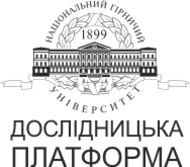№80-9
Comparative analysis of the long-term impact of mass explosions on the rock massesproperties with adaptive interpretation of observation results
D. Titov1, S. Henkulenko2, Y. Hryhoriev1, V. Kozariz1, S. Balyk1
1Kryvyi Rih National University, Kryvyi Rih, Ukraine
2LLC «RUDOMAINE», Kryvyi Rih, Ukraine
Coll.res.pap.nat.min.univ. 2025, 80:93–104
Full text (PDF)
https://doi.org/10.33271/crpnmu/80.093
ABSTRACT
Purpose of the presented study is to analyze the results of mass industrial explosions in the open-pit located in one of the central districts of the city, surrounded by other industrial facilities, residential and public buildings with developed urban infrastructure, as well as to assess the evolution of the consequences of regular explosions over long periods.
The methodology is a systematic generalization of data on the registration of manifestations of mass explosions to substantiate the most rational adaptation of rock blasting parameters to the established regular temporal deviations of the results of mass explosions.
Findings. To verify the working hypothesis,that the main factor of this process is the constant regular, long-term explosive shaking of the rock massif, as a result of which its natural blockiness is subjected to increasing technogenic development as a result of the "working through" of primary structural cracks along the faces of the blocks-individuals of the massif, a comparative analysis of the mass observation data was performed. The comparative causal analysis confirmed the accuracy of the initial hypothesis and determined the approximate range of the observed changes and their regularity, which greatly facilitates the search for adaptive measures and adjustment of the parameters of the mass explosion technology in a quarry with extremely limited possibilities for the range of variation of the parameters of the explosive technology in it due to its location in the central part of the city.
The originality of the article lies in the comprehensive comparative analysis of the long-term impact of mass explosions on the change in the physical and mechanical properties of rock massifs. The author's hypothesis is proposed and experimentally confirmed, which explains the loss of 9–12% of the energy of a mass explosion by the fact that part of the explosion energy is lost to the movement of blocks and the abrasion of the crack filler, and thus for the first time explains the discrepancy between the calculated and actual parameters of the energy effects of the explosion. Thus, the idea of an adaptive approach to the design of mass explosions, which takes into account historical changes in the properties of the massif and their impact on the effectiveness of the blasting, has been further developed.
Practical implementation. The obtained results facilitate the adaptive adjustment of mass blasting parameters, taking into account the duration of mineral deposit exploitation using drilling and blasting technologies, as well as the geological conditions associated with rock masses exhibiting complex, technogenically altered structural configurations.
Keywords: open-pit, rock massif,blasting; rock,borehole charge,mass explosion.
References
1. Rehman, A. U., Emad, M. Z., & Khan, M. U. (2021). Improving the environmental and economic aspects of blasting in surface mining by using stemming plugs. Journal of the Southern African Institute of Mining and Metallurgy, 121(7), 269–377. https://doi.org/10.17159/2411-9717/1573/2021
2. Frolov, O.O., & Beltek, M.I. (2022). Investigation of the influence of rock mass fracture on the structural weakening coefficient. Scientific Edition of the State University «Zhytomyr Polytechnic», Technical Engineering, 2(90), 183–192. https://doi.org/10.26642/ten-2022-2(90)-183-192
3. Kovrov, O.S., & Tereshchuk, R.M. (2020). Analysis of approaches to determining the strength characteristics of rocks for predicting the landslide hazard of slopes. Scientific and Technical Journal «Modern Technologies, Materials and Structures in Construction», 1, 63–72. http://doi.org/10.31649/2311-1429-2020-1-63-72
4. Boshoff, D., & Webber-Youngman, R. C. (2011). Testing stemming performance, possible or not? J. South. Afr. Inst. Min. Metall, 111, 871–874.
5. Fourney, W. L., Barker, D. B., & Holloway, D. C. (1981). Model studies of explosive well stimulation techniques. International Journal of Rock Mechanics and Mining Sciences & Geomechanics Abstracts, 18(2), 113–127. https://doi.org/10.1016/0148-9062(81)90737-3
6. Azarian, V., Lutsenko, S., Zhukov, S., Skachkov, A., Zaiarskyi, R., & Titov, D. (2020). Applied scientific and systemic problems of the related ore-dressing plants interaction in the event of decommissioning the massif that separates their quarries. Mining of Mineral Deposits, 14(1), 1–10. https://doi.org/10.33271/mining14.01.001
7. Minieiev, S. (2021). Justification of the parameters for safe blasting of floor rocks in the roadway driven through the hazardous by outbursts sandstones. Geo-Technical Mechanics, 159, 11–29. https://doi.org/10.15407/geotm2021.159.011
8. Beltek, M.I. & Frolov, O.O. (2023). Determination of the influence of the degree of fracturing of the rock mass on the index of reduction of its strength. Collection of Research Papers of the National Mining University, 74, 7–18. https://doi.org/10.33271/crpnmu/74.007
9. Tymoshchuk V. & Tymoshchuk Y. (2023). Mathematical modeling of the geomechanical stateof a manufactured rock mass under the conditionsof seismic loading. Collection of Research Papers of the National Mining University, 74, 163–179. https://doi.org/10.33271/crpnmu/74.163
10. Skachkov, A.A. (2018). Prostorova spriamovanist enerhii kombinovanykh sverdlovynnykh zariadiv za dyferentsiiovanoho enerhonasychennia masyvu porid. Zbirnyk naukovykh prats NHU, 55, 88–96. http://znp.nmu.org.ua/pdf/2018/55/10.pdfhttp://znp.nmu.org.ua/pdf/2018/55/10.pdf
11. Skachkov, A. A., & Zhukov, S. O. (2016). Formuvannia napruzhenoho stanu prykonturnoi zony ustupu. Visnyk Kryvorizkoho natsionalnoho universytetu, (43), 147–153. https://doi.org/10.31721/2306-5451-2023-1-57
12. Dortman, N. B. (1984). Fizicheskie svoystva gornykh porod i poleznykh iskopaemykh (petrofizika). Spravochnik geofizika (2nd ed., revised and enlarged). Nedra.
13. Lomtadze, V. D. (1990). Fiziko-mekhanicheskie svoystva gornykh porod. Metody laboratornykh issledovaniy. Nedra.
14. Malykh, D., Eremenko, G., & Titov, D. (2024). Parametric evolutions of explosive fracture zones in the explosion of series of blasthole charges with a complex structure. IOP Conference Series: Earth and Environmental Science, 1348(1), 012083. https://doi.org/10.1088/1755-1315/1348/1/012083
15. Hryhoriev, Y., Lutsenko, S., Shvets, Y., Kuttybayev, A., & Mukhamedyarova, N. (2024). Predictive calculation of blasting quality as a tool for estimation of production cost and investment attractiveness of a mineral deposit development. IOP Conference Series: Earth and Environmental Science, 1415(1), 012027. https://doi.org/10.1088/1755-1315/1415/1/012027
16. Shi, X., Zhang, Z., Qiu, X., & Luo, Z. (2023). Experiment Study of Stemming Length and Stemming Material Impact on Rock Fragmentation and Dynamic Strain. Sustainability, 15(17), 13024. https://doi.org/10.3390/su151713024




